
Our personal experience of a service moves across both online services and real-life physical experiences, so too should our design thinking.
Public transport services provide a good example of how digital interfaces and physical experiences need to work together. The diagram below shows a customer journey within a public transport experience. In this article, I’ll describe how the digital and physical interactions are connected through the journeys of real-life scenarios.
The customer journey

The diagram above shows a typical customer journey within a public transport experience. Each customer is travelling under different circumstances, but each goes through similar stages en route to their destination. First their need is established, they conduct research into how to solve their need, then purchase the tickets or passes necessary for their trip, then head to the station. Here they orientate themselves to find the right train or bus they need, travel aboard it and finally alight at their final destination.
Meet our travellers
When designing experiences it’s essential to think about the real types of people who will be using public transport. This allows us to highlight real experience design challenges across the service.
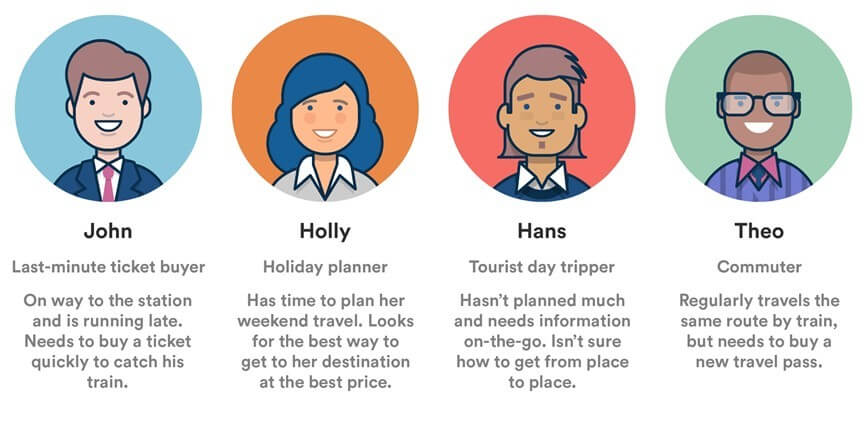
From need to research
A customer’s context and purpose for using a service strongly influences their needs and behaviours through each stage of their journey. Their level of confidence and urgency will determine the length of time their interactions take, as well as which channel they use to research and make their final decision.
In public transport, a person planning a holiday or day trip, like Holly or Hans, will begin the research phase at a leisurely pace and gather information over a longer period. However, a last-minute ticket buyer, like John, who is very time-poor will have little time to digest information.
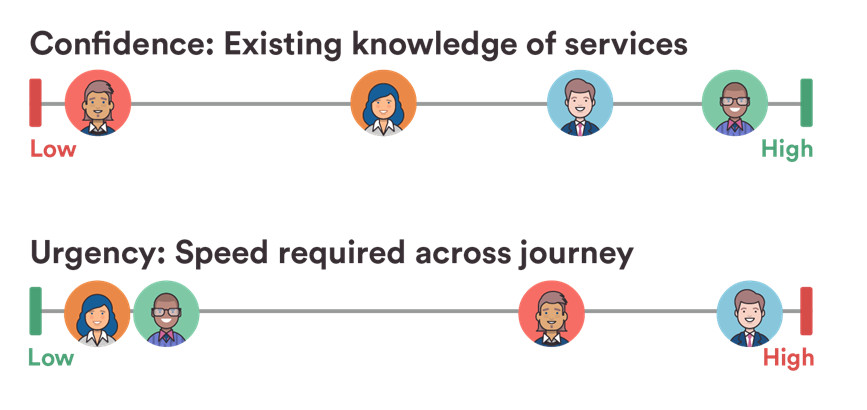
We must also consider which channels are relevant to each type of traveller at each stage, their emotions throughout their journey, and how they will transition between channels. Let’s look at 4 channels that our travellers might use to research and purchase: Desktop, Mobile, Kiosk, and Ticket Office.
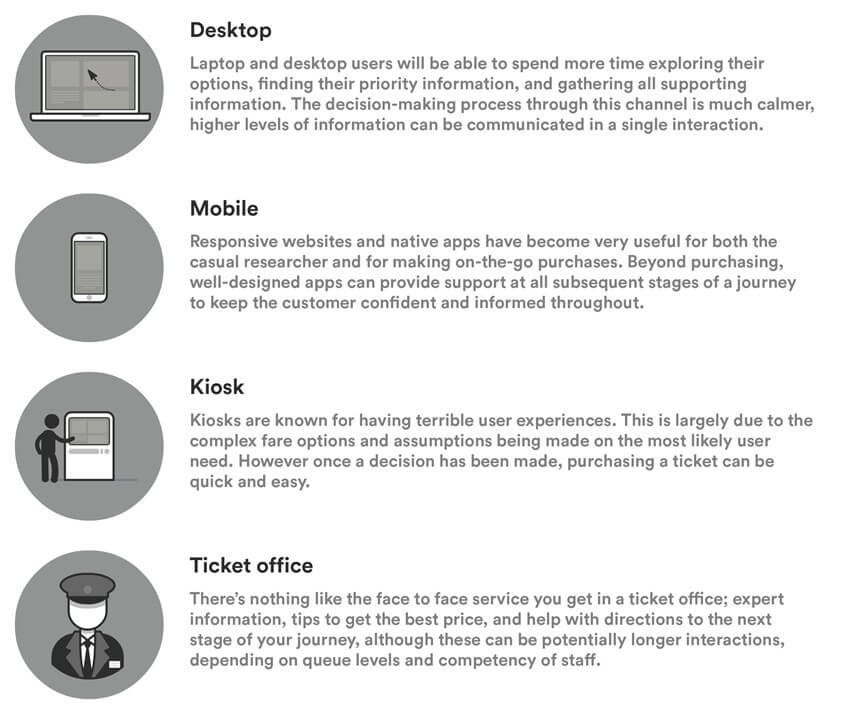
From research to purchase
The research carried out my our users is often the first interaction they will have with a service. Each of our travellers will have different priorities. These would need to be considered within the design of each research method to best support the traveller’s needs and context. Last-minute buyer John will be focused on destination, assuming that his origin and date of travel have been pre-selected by the kiosk, and price will be of low importance. Whereas holiday planner Holly will be ensuring that the origin and destination are correct, and will be much more focused on getting a cheaper price.
It’s important for our travellers to move smoothly from their research to ticket purchasing. Level of information required versus level of urgency will vary based on their needs and the channel they are using, therefore each channel needs to strike a balance between these two things. Last-minute buyer John will be in a hurry to purchase his ticket, whereas holiday planner Holly and commuter Theo will be carrying out the research and purchase journey at a more leisurely pace to ensure they get the best value and price.
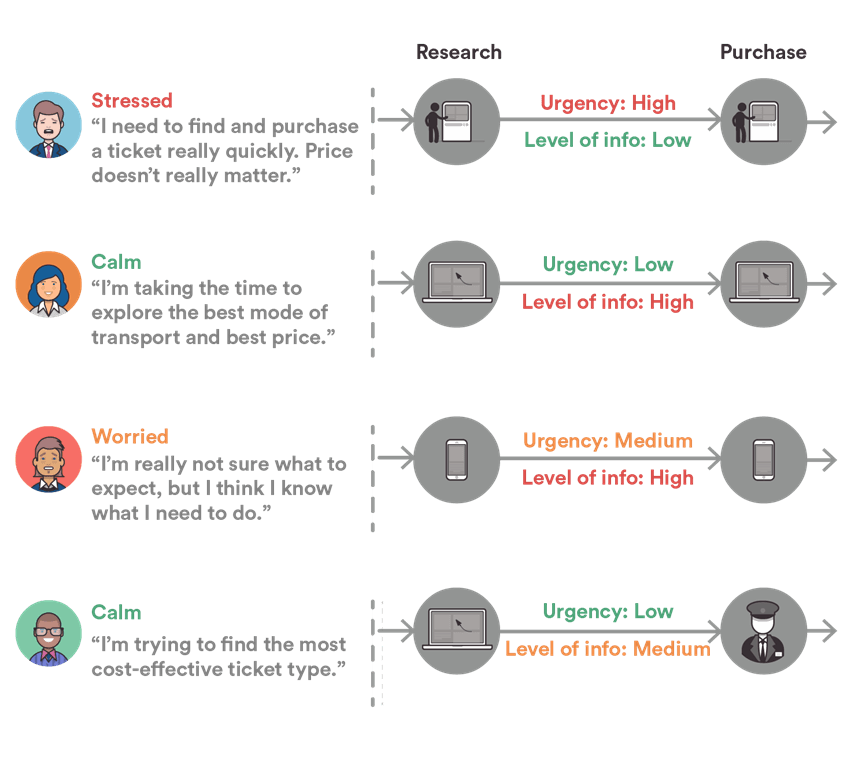
What can UX designers do to improve this stage?
- Give users the right information to make decisions
A multi-channel customer journey has many stages, each of which have a different quality of experience. Transitioning between these stages can cause anxiety and frustration. Ensuring that customers feel informed by their initial research will go a long way to alleviating their worries at later stages in the process. - Balance confidence, knowledge, and speed
Desktop and mobile can provide more contextual information than a kiosk, but the purchasing journey can often be much longer. Consider how channels can support each other to meet the needs of the customer at that specific point in the user journey.
From purchase to orientation
When we move from a digital experience to the real world there is a transition that, if not considered, could easily cause high levels of frustration and anxiety for customers with low knowledge levels or high time pressures.
Signage and wayfinding at a station are incredibly important, but we also need to consider how the previous channel could help the traveller make that transition easier. Tourists, Holly and Hans, may not be familiar with the public transport service, so helping them get smoothly to their mode of transport will create a positive experience. This could mean providing travellers with information on station layouts or what to expect when they arrive. Even last-minute buyers, like John, could be supported by specific information on platforms, bus stops, and any updates on delays to the service.
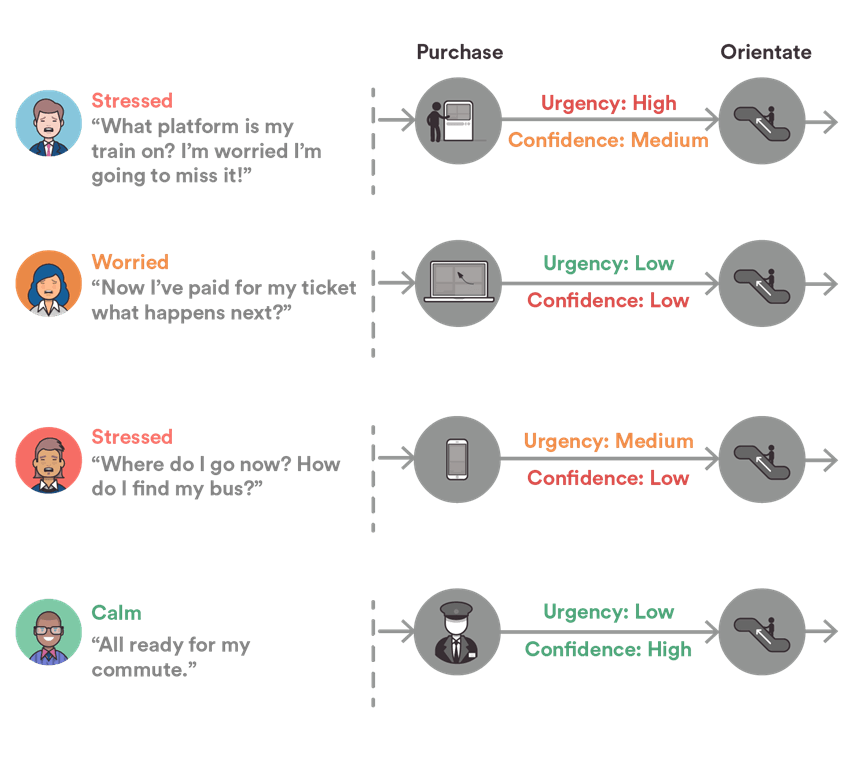
What can UX designers do to improve this stage?
Consider the time between stages
The longer the time between each stage in a cross-channel journey, the more opportunities a customer has to lose confidence. Well thought out customer communications can be used here to improve the transition. Text messages, emails, or notifications can be useful in boosting user confidence at these points in their journey.
Support the wayfinding journey
Providing information at the end of one channel interaction before the customer moves to the next stage of their journey may increase their knowledge. This could be providing information post-purchase on an online or mobile purchase journey, placing secondary information on tickets, or using digital updates online or on mobile for information such as platform and delay information.
From orientation through travel to alighting
This stage of the service lives mainly in the physical world, and there can be wildly different experiences for customers across providers. Our travellers may need help finding their seat, checking their journey’s progress, or working out when they should get off public transport. Hans, our day tripper, in particular could be unsure about when he needs to alight, or even what the protocol is. Does he need to be at the door waiting? Or press a button to notify the driver he wants to get off? Or does he even just stay in his seat until the vehicle stops? This kind of information is normally learned over time rather than communicated to travellers, so can be quite challenging for tourists to grasp immediately.
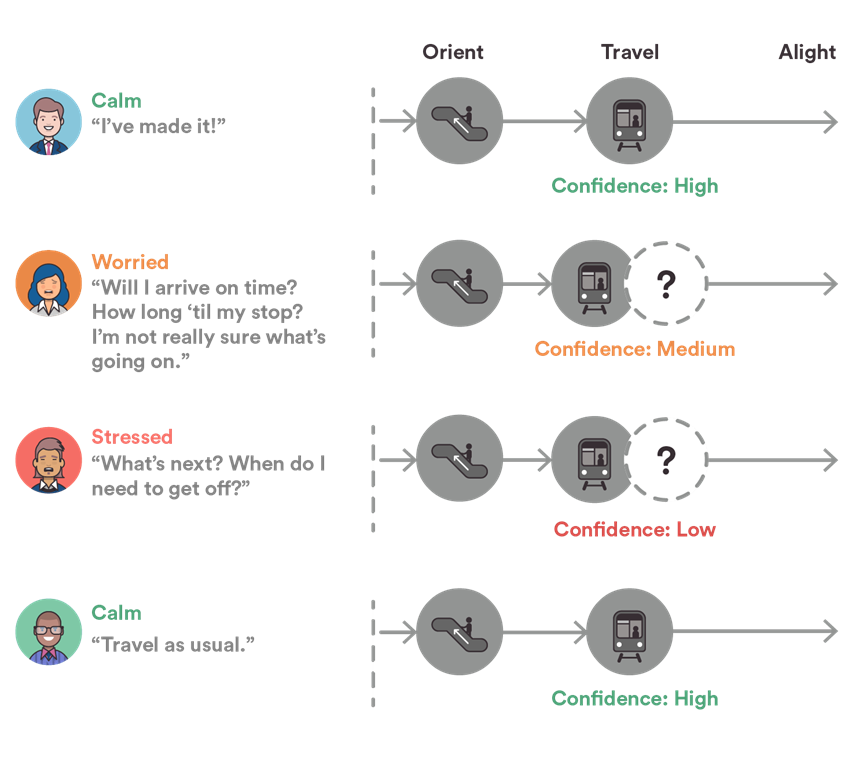
What can UX designers do to improve this stage?
Use research to highlight opportunities
Researching and understanding customers’ needs and concerns helps to define opportunities across both the physical service and the digital channels. It can also be used to create moments of unexpected help, support ,or even entertainment.
Keep customers informed throughout the whole service experience
Focus on creating a good experience with great customer communications to support the traveller throughout their journey. This will also build brand loyalty and keep customers returning to, and recommending, the service.
Improving the cross-channel customer experience
Almost everyone uses public transport at some point, but we all use it in different ways. Most people have had a negative experience on public transport at some point, and while digital technology has helped ease the process, there are still some ways to go before it meets the needs of all travellers. Some key points to keep in mind when designing are:
1. Consider each potential route across services
Customer service maps are a good tool to map out the cross-channel experience for users. Each user can have a different route and can interact with different channels at different points in their experience. Their emotions and pain points will highlight where the opportunities may lie to create a smoother cross-channel experience.
2. Consider customer communications before and during a journey
Consider communications that will support the customers’ needs throughout their service experience. A good content strategy will support customers through all their interactions with a service. Notifications, emails, and up to date app content can give customers the information they need before they realise they need it. I’m a big fan of the Trainline app. It provides updates direct to your phone for train platforms, updates on progress and delays, and it even predicts where there’ll be available seats. This is a great use of content to help transition travellers through their journey.
3. Use digital to help transition customers between physical channels
Where the physical signage and environment can’t easily be changed, we can instead use technology to help to solve customer needs. GPS, Bluetooth, or beacons can be a way to solve wayfinding challenges, but backing these up with physical additions can also be an effective and low-cost way to support travellers. London Victoria station uses wayfinding lines on the station floor to direct people through the station — very handy and a really nice experience if you’re in a hurry to get to the Gatwick Express to catch your flight!
Even when you are focusing on designing the digital aspects of an experience it’s important to consider how your customers will interact with a service across channels. In our experience this will help to create more exciting, innovative, and effective solutions that will not only meet customer needs, but also surprise and delight them with the service. If your next project involves multi-channel, get in touch to see how we can help you plan and design for those transitions between channels, and keep your users engaged from end to end.
